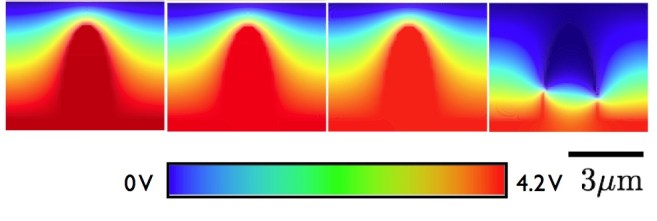
The recent experimental development of laser structuring of three-dimensional (3D) conical architectures has led to an 80x improvement in galvanostatic cyclability compared to its thin film counterpart. To a first approximation, its main advantage resides in its shorter ion diffusion pathways and more efficient electrical transport. In this project, by using LiCoO2 as the cathode chemistry, a 3D model was developed to investigate the effect of shape (aspect ratio) and C-rate (current density) on the performance and the associated chemomechanical reliability. Three-dimensional simulations demonstrate the effect of the topology on the surficial electrochemical heterogeneities and its impact on the long-term performance of the device.
